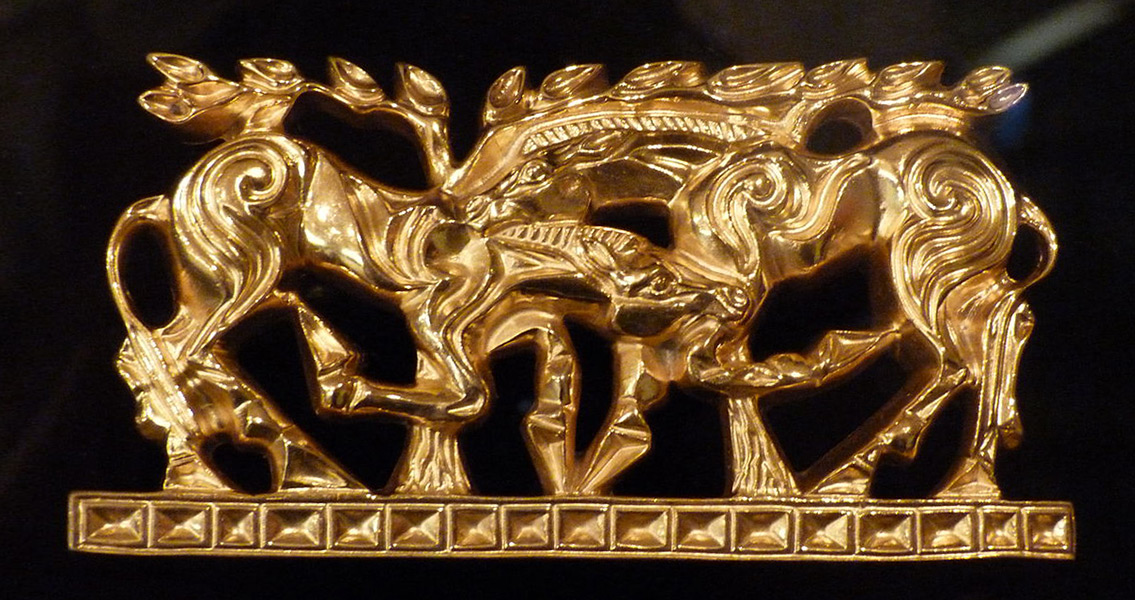<![CDATA[Scythians, the steppe nomads that roamed the lands between Mongolia and Ukraine, were great warriors but also skilled craftsmen and connoisseurs of golden vessels, as revealed by a wealth of finds in a burial mound they left behind. Some of the finest examples of Scythian-era gold have recently been made public for the first time: several solid golden vessels discovered in 2013 in the southern region of Stavropol. Since there are no Scythian cities or settlements that archaeologists can study, most of what is known about these ancient tribes comes from artefacts found in their burial mounds, the kurgans. It was one of these kurgans, a particularly large one, that people working on a power line in Stavropol stumbled upon two years ago. The archaeologist called to investigate, Alexander Belinski, found hidden in a stone box bracelets, rings, three cups and two larger vessels resembling buckets. Belinski said that the rest of the tomb had been looted, but these artefacts were more than enough to get the scientific community excited. This is because the region has been the site of an abundance of archaeological digs over the last few decades with several dozen Bronze Age kurgans being examined, but none of them has yielded anything as interesting as this one. According to Belinski, speaking to news portal MK.ru in the summer of 2014, the artefacts may date back as far as the 5th-4th century BCE, much earlier than when the kurgans are generally considered to have been created. According to MK.ru, the golden vessels were made by Greek craftsmen by order of the Scythians and are all examples of very fine work. Digital Journal, however, pegs them as the work of the Scythians themselves. One of the bucket-like vessels features a depiction of two gryphons attacking a deer on the one side, and another two gryphons attacking a horse. The depictions are done with stunning detail, including the spots on the skin of the deer. Another vessel features a fighting scene in which you could even see the stitches on the participants’ clothes, their shoes, and the type of bow they hold. The central figure in this depiction is an elderly man, with wrinkles on his face, and it is this figure and the fact that the old man is attacking a much younger one that suggest the find may have historical implications as well. According to Belinski and his colleagues, the scene is very likely a depiction of the so-called “Bastard Wars” described by Herodotus. The Bastard Wars, the story goes, took place after the Scythians returned from a long war to find their wives had borne children to their slaves. So, the scene on the vessel could be a piece of evidence that these wars took place. On the other hand, as Belinski himself notes, it could be a depiction of the ‘Bastard Wars myth’, as he calls it. The vessel with the gryphons killing animals most probably depicts a scene from the Underworld, and both it and the one with the Bastard Wars scene are thought to have been used for ritual purposes by the high priest of the tribe, who was also usually the king, Belinski told MK.ru. Image courtesy of Wikimedia Commons user: Derzsi Elekes Andor]]>
Unique Golden Vessels Unearthed in Scythian Tomb
